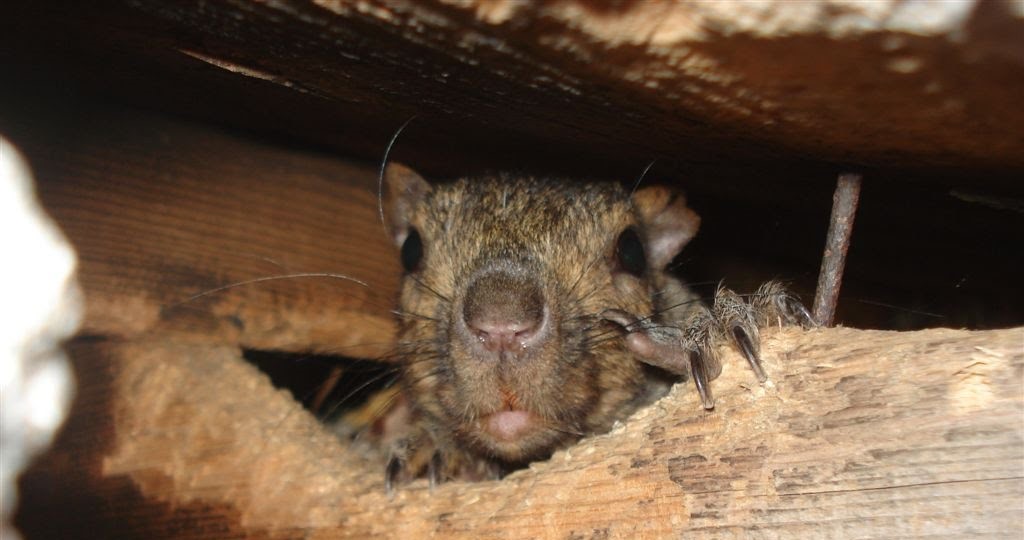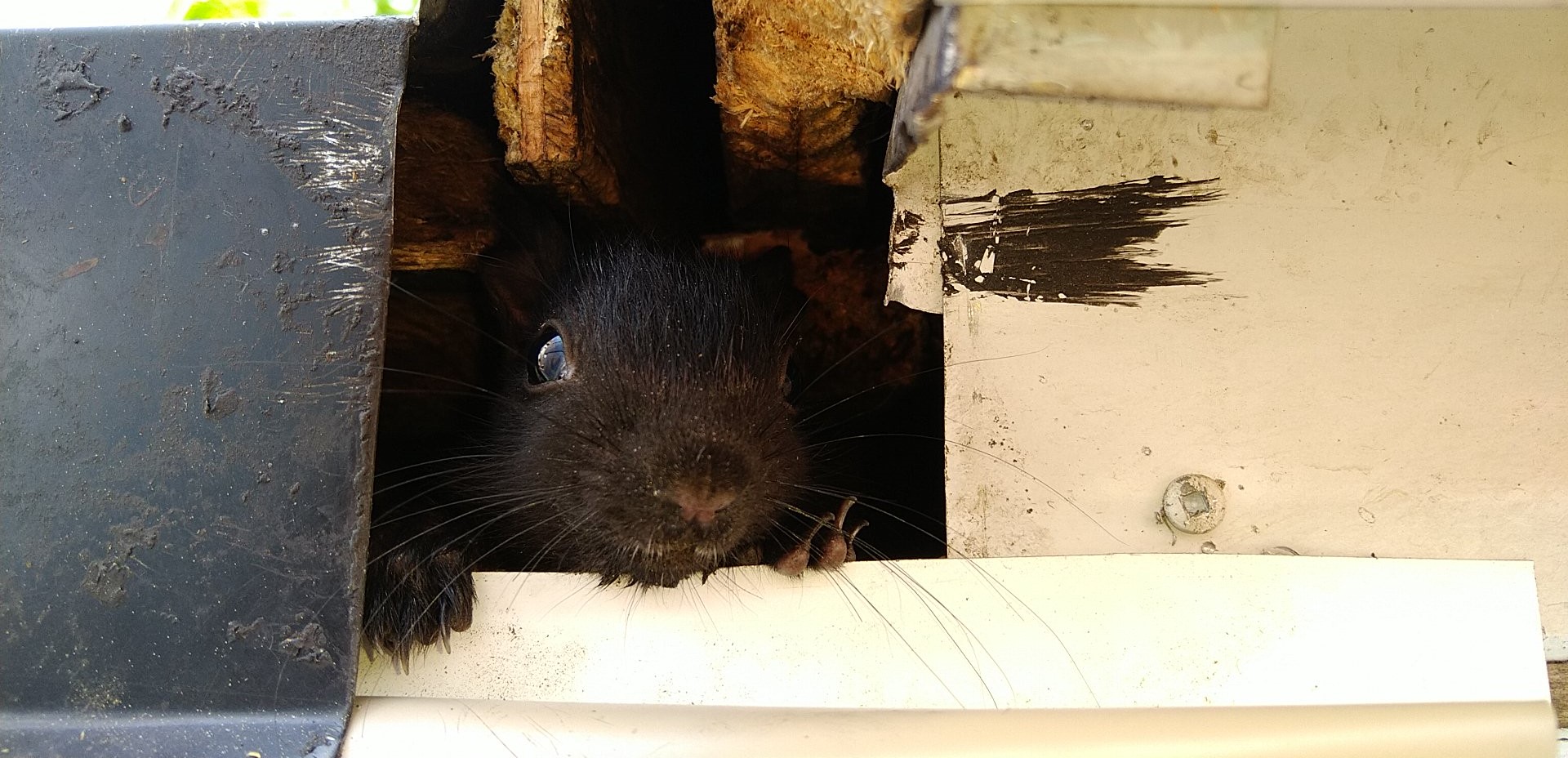Squirrels, with their playful antics and bushy tails, might appear to be charming visitors in the yards of Anoka County residents. However, when these nimble creatures make their way into our homes, their presence becomes less of an amusing spectacle and more of a concerning invasion.
The cozy corners of your attic or walls can become prime real estate for a squirrel nest, transforming what was once a peaceful dwelling into a bustling hub of unwanted activity. This shift not only disrupts the serene ambiance of a household but also introduces a slew of risks associated with having squirrels as uninvited guests. Skedaddle Humane Wildlife Control utilizes a compassionate and effective strategy to remove squirrels from homes throughout Minnesota.
Understanding the dangers posed by squirrels living within human residences is crucial for homeowners. These small yet resourceful rodents can cause significant damage to electrical wiring and insulation, posing fire hazards and leading to costly repairs. Furthermore, squirrels have a relatively long lifespan for rodents, meaning they can establish a long-term residence if not promptly addressed.
The debris and waste from a squirrel nest can also create health concerns, detracting from the indoor air quality and potentially leading to respiratory issues and other health problems. This discussion aims to shed light on the importance of professional wildlife control services in safely and humanely addressing these issues. By enlisting local wildlife removal experts, residents can protect their homes from the many dangers of hosting squirrel populations, ensuring peace of mind and the integrity of their dwellings.
Understanding Squirrel Habits and Their Attraction to Homes
Squirrels are fascinating creatures known for their agile movements and resourceful nature. A typical day in the life of a squirrel involves foraging for food, such as nuts, seeds, and occasionally small insects, which play a crucial role in their diet. They are also adept at creating nests, usually in trees, to provide shelter and a safe place for their young. Remarkably, the natural lifespan of a squirrel can span several years, during which they may continually seek out optimal nesting sites and food sources to support their survival and reproduction.
One of the primary reasons squirrels find their way into our homes is their unending quest for a secure nesting site. The secluded spots within our attics or hidden corners of our houses offer what appears to be an ideal shelter away from predators and harsh weather conditions. Additionally, human homes can accidentally supply a readily available food source through unsecured bins or pet food left outside. This economic opportunity, coupled with the safe haven our homes seemingly provide, makes them attractive to these agile climbers.
The Health Hazards These Animals Present
While squirrels may seem harmless at first glance, their presence in our homes can pose substantial health risks to residents. These animals are carriers of various diseases that can affect humans, creating a hidden danger that goes beyond mere property damage. Among the most concerning diseases is leptospirosis, a bacterial infection that can lead to severe health issues, including liver and kidney damage. Rabies, although less common in squirrels than in other wildlife, remains a potential risk, especially in areas where the disease is prevalent.
Beyond the diseases squirrels can directly transmit, these animals also act as hosts for a number of parasites, including fleas and ticks. These parasites can easily migrate from their squirrel hosts to human inhabitants, bringing with them an array of diseases. Lyme disease, for example, transmitted by ticks, can have long-lasting effects on a person’s health. The presence of these parasites in our homes increases the risk of transmission and poses a significant public health risk.
Tackling the issue of squirrels in our homes goes beyond simple wildlife removal; it is a matter of public health and safety. Ensuring our living spaces are free from these uninvited guests helps maintain the health and well-being of our families.
The Extent of Damage to Property
When we think of squirrels, the image of a harmless, bushy-tailed creature likely comes to mind. Yet, when these agile animals take up residence in our homes, they bring with them a host of potential problems, particularly to the structure and safety of our property. The types of damages caused by these uninvited guests are vast and varied, spanning from purely superficial to potentially severe hazards.
Primarily, squirrels have a penchant for chewing on various materials, which can lead to significant damage within our living spaces. Electrical wiring is especially at risk; these rodents can strip the insulation from wires, leaving them exposed and significantly increasing the risk of fire.
This is not a minor issue; damaged wiring is a leading cause of household fires, underscoring the seriousness of this threat. Similarly, gnawed woodwork is another hallmark of a squirrel infestation. Whether it’s the frames of our doors, the edges of roofs, or even the structural beams that support our homes, squirrels can and will chew through them, compromising the integrity of our dwellings.
But it doesn’t stop there. The insulation within our walls and attic spaces is also a target for these creatures. Squirrels often pull apart the insulation to use for nesting materials, leaving our homes less energy-efficient and opening the door to further damage from the elements.
Understanding the gravity of these risks is crucial. The damage squirrels can cause goes beyond mere inconvenience; it poses real safety concerns that can affect every resident’s well-being. It’s not just about the initial havoc wreaked; it’s about the domino effect that can compromise the safety and security of our living environments. The increased risk of electrical fires due to damaged wiring should be a wake-up call for all of us to take proactive steps to ensure our homes remain safe and secure from these potentially destructive creatures.
Recognizing the Presence of These Animals in Your Home
Squirrels, with their innate ability to climb and explore, often seek refuge in the cozy and secluded parts of our homes. A typical squirrel nest, known as a “drey,” appears as a cluttered collection of twigs, leaves, bark, and whatever soft materials the squirrels can find, such as shredded insulation from our attics or wall voids.
These nests are not just haphazard piles but intricately constructed structures, often found tucked away in the warmth of an attic or hidden within the protective confines of wall voids.
Discovering the presence of these agile creatures within our homes can be done by noting a few key signs. One of the most obvious indicators is the sound of scampering or scratching during the day, particularly in the morning and evening, when squirrels are most active. This noise, often heard through the ceiling or walls, is a telltale sign that we’re hosting unwelcome guests.
Additionally, visible damage to the exterior of the house, such as chew marks on wood or siding, can indicate their entry points. Another sign to watch for is the presence of droppings in the attic or storage areas, which not only signifies an infestation but can also pose health risks.
Preventive Measures to Deter Squirrels
Ensuring your home remains unappealing to squirrels involves a combination of strategic alterations and regular maintenance. By adopting certain practices, homeowners can significantly reduce the chances of these agile animals seeking refuge or nesting within their properties. Here’s a rundown of effective strategies to deter squirrels from your space:
- Trimming Overhanging Tree Branches: Squirrels are exceptional climbers, using trees as their pathways to your roof or into your attic. Keeping tree branches trimmed, so they don’t provide a bridge to your house, is a critical step in making your property less accessible.
- Securing Food Sources: These creatures are often attracted to easily accessible food. Ensure that bird feeders are placed away from the house and that any fallen seeds are regularly cleaned up. Additionally, pet food should not be left outside, as it can attract squirrels and other wildlife.
- Regular Maintenance Checks: Conducting periodic inspections of your home for any signs of entry or damage can help catch problems early. Pay special attention to the roof, eaves, and vents for potential entry points. Small weaknesses in these areas can serve as invitations for squirrels.
- Proper Storage of Food and Waste: Ensure that all food waste is securely stored in bins that cannot be easily accessed or opened by wildlife. Keeping your outdoor area clean of food residues can also deter squirrels from being attracted to your property.
By implementing these practical steps, you can greatly reduce the likelihood of squirrels and other wildlife finding your home inviting. While there’s no way to guarantee that a determined squirrel won’t find a way in, combining these techniques with a vigilant eye can make your home far less appealing. Remember, the goal is to coexist peacefully with our wildlife neighbors while protecting our living spaces from potential harm.

Safeguarding Your Home with Professional Wildlife Removal
In summary, the presence of squirrels in one’s home poses several risks ranging from structural damage to health hazards through their nests and droppings. The intricate nests, resembling cluttered collections of twigs and soft materials, are not just a nuisance but can lead to significant problems if left unchecked. Understanding the lifespan of a squirrel helps homeowners realize the persistent nature of these issues, as squirrels can inhabit a space for several years. By addressing these concerns with local wildlife removal professionals like Skedaddle Humane Wildlife Control, you can ensure the humane treatment of these agile creatures while safeguarding your home’s integrity and your family’s health.
Key benefits of our professional approach include thorough assessment, effective exclusion solutions, and invaluable advice on preventive maintenance. This ensures not only the immediate resolution of the current problem but also long-term deterrence against future infestations. Maintaining a squirrel-free home is essential for both health and safety, preserving the sanctity of your living space without the looming threat of wildlife intrusion.
Understanding how to recognize the signs of squirrels’ presence is crucial in proactive wildlife management. By partnering with experts in local wildlife removal, homeowners can enjoy peace of mind, knowing their homes are protected against the unforeseen complications that squirrels and other wildlife can bring.
For more information or to request a quote on safeguarding your home from squirrels and other wildlife, contact us. Our experienced team is ready to provide effective solutions tailored to your specific needs, ensuring a safe and serene living environment.




